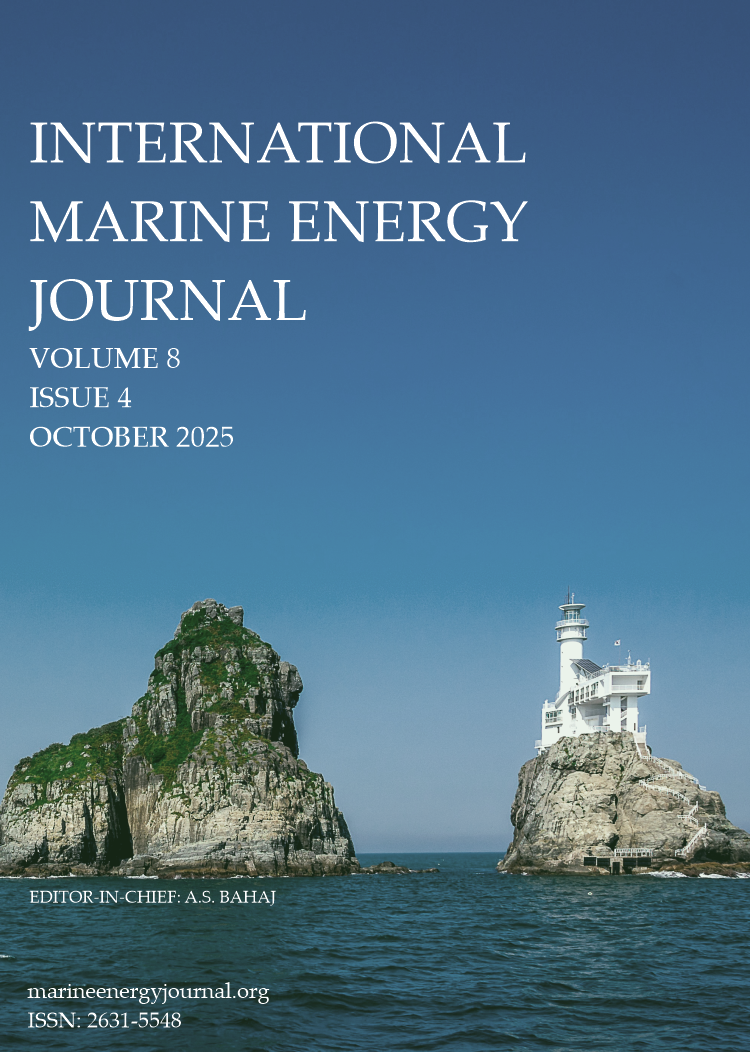A Global Design Search of a Shrouded Tidal Current Turbine by Meta-model Assisted Genetic Algorithms
DOI:
https://doi.org/10.36688/imej.8.367-377Keywords:
Multi-objective optimization, Genetic algorithm (GA), Artificial neural network (ANN), Tidal current turbine, Sensitivity analysisAbstract
This study was conducted to investigate the effect of geometry on the performance of a shrouded tidal turbine. When the hub radius and taper change, with a fixed shroud radius, the inlet area changes from the inlet to the turbine, and according to the continuity equation, the axial velocity will also change. This inlet velocity, influences the output torque by a factor of for the power coefficient. A global search optimization system was used to search for the optimal geometry. 13 impeller design parameters and 5 shroud casing design parameters were considered for optimization. To reduce the simulation cost, an artificial neural network (ANN) was applied as the meta-model of the RANS solver. Multi-objectives of a power coefficient at different tip speed ratios were applied to provide a function of the wide operating range of the turbine. The proposed optimized turbine design exhibits a high output shaft power at low tip-speed ratio. Increasing the hub radius caused a strong velocity gradient at the turbine inlet. Hence, achieving smooth blade loading from the hub to the shroud for the baseline is difficult. However, this inlet axial velocity distortion decreased in the optimal geometry, attaining smooth blade loading from the hub to the shroud. This results in higher torque output hence higher values in the optimal geometry. From the sensitivity analysis of the design parameters with , there is a good global correlation between the axial velocity upstream of the turbine and the . A strong circumferential velocity occurs in the optimal diffuser, causing a centrifugal force at the shroud tip, suppressing the diffuser's flow separation. This improves the pressure recovery and performance of the optimal design.
Downloads
Published
How to Cite
Issue
Section
License
Copyright (c) 2025 Benson Oyunge Mwangi, Ngome Adam Mwero , Reiko Yamada , Patxi Garcia-Novo, Yusaku Kyozuka , Daisaku Sakaguchi

This work is licensed under a Creative Commons Attribution 4.0 International License.
I the author/we the authors understand that I/we retain copyright over our article. I/we grant a licence to IMEJ to: publish my/our article under the terms of the Creative Commons Attribution (CC BY) License which permits use, distribution and reproduction in any medium, provided the original work is properly cited, and identify IMEJ as the original publisher.


